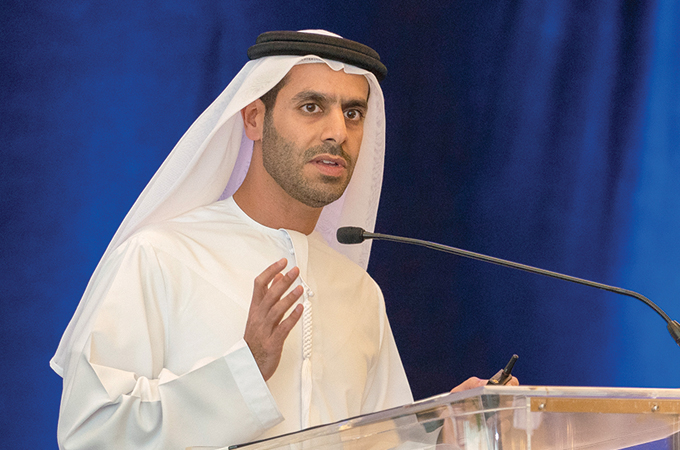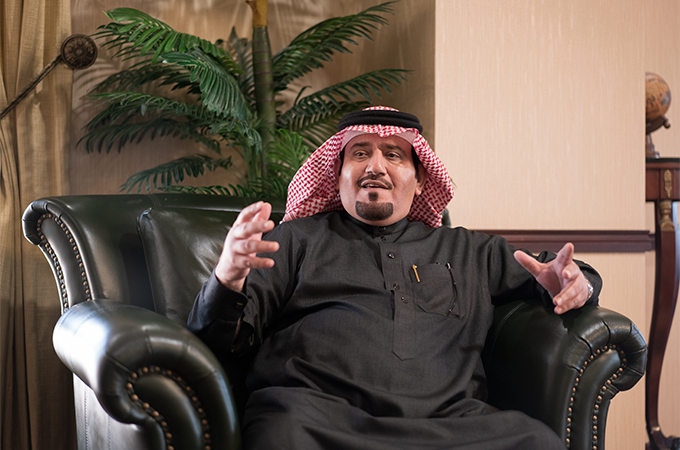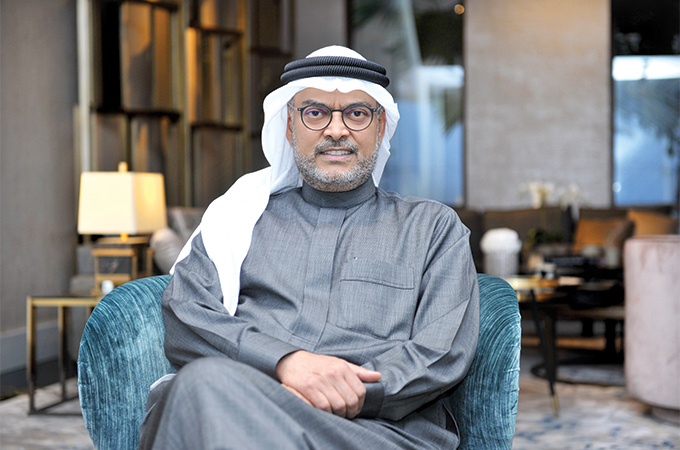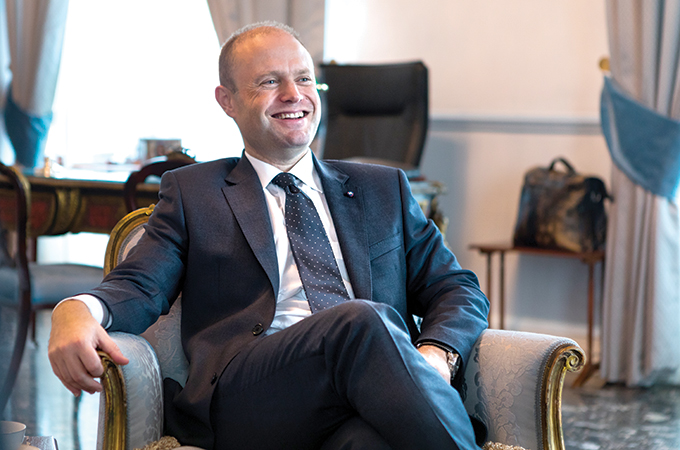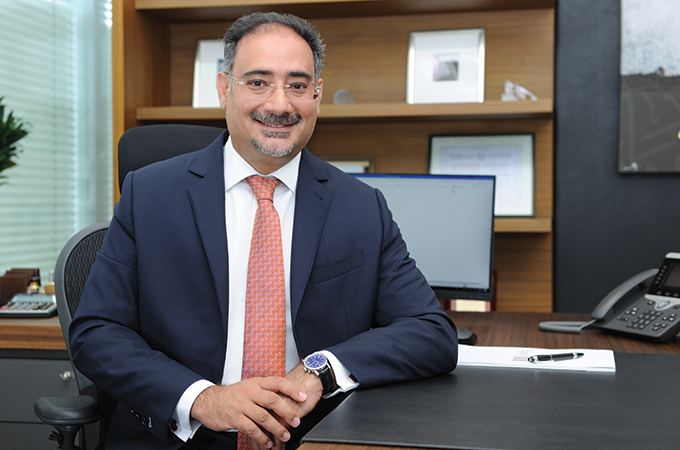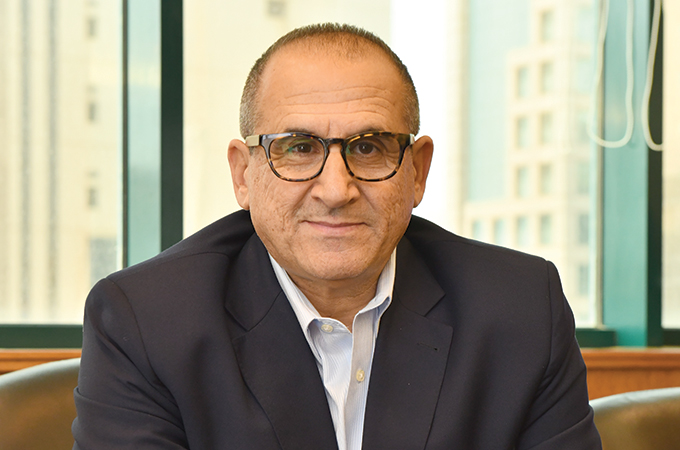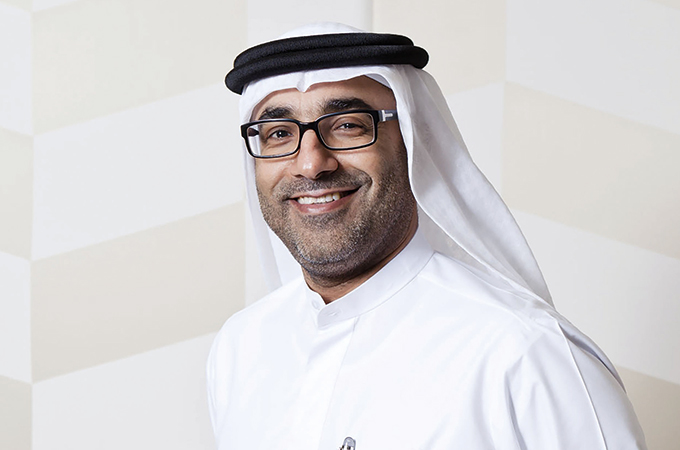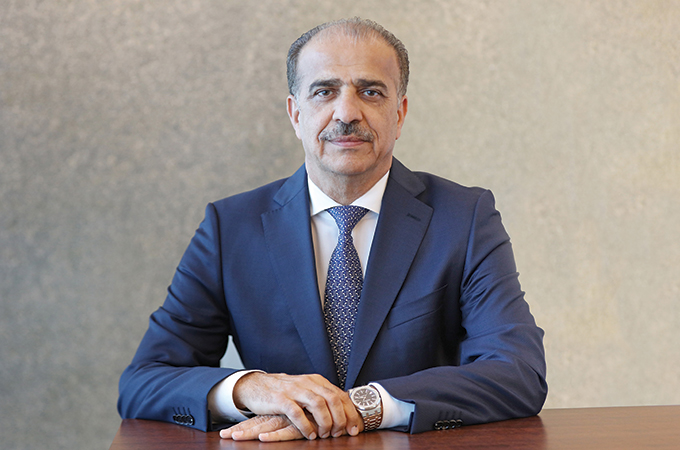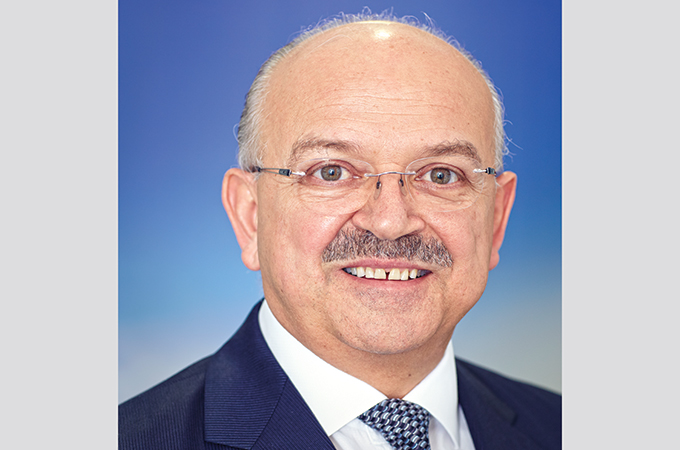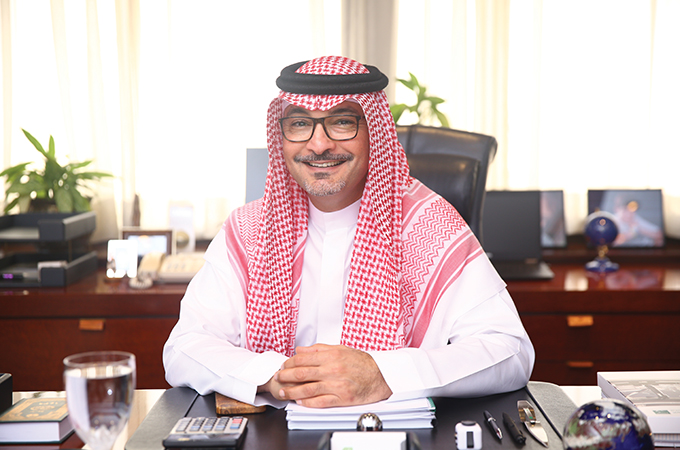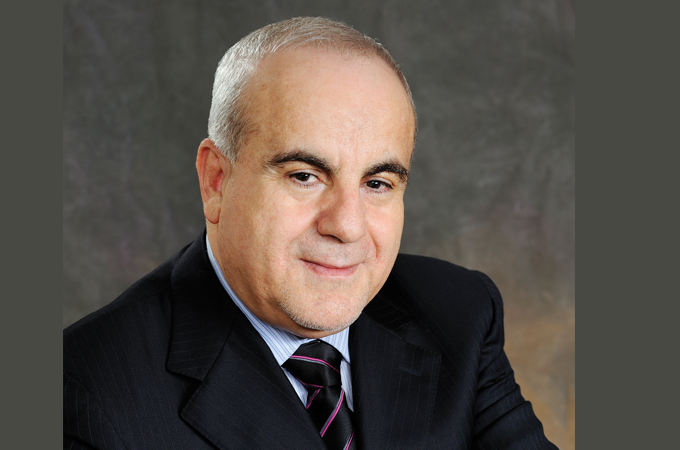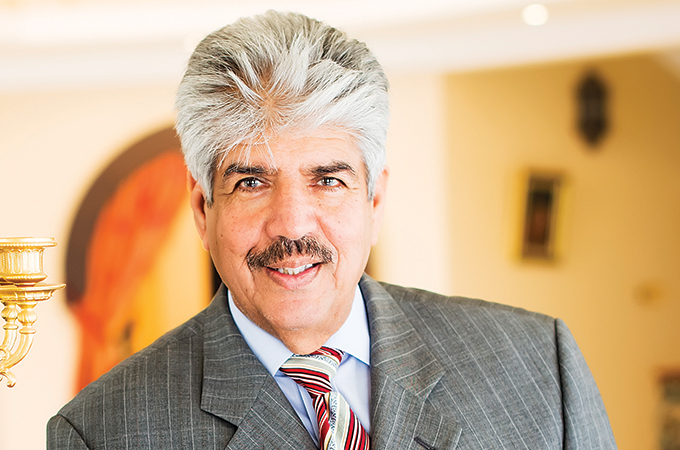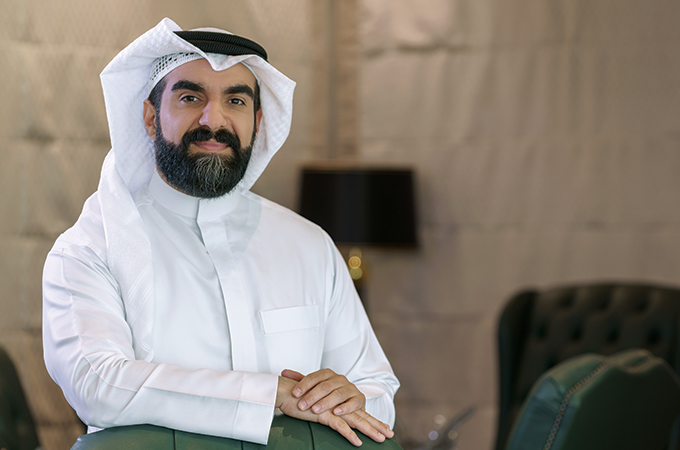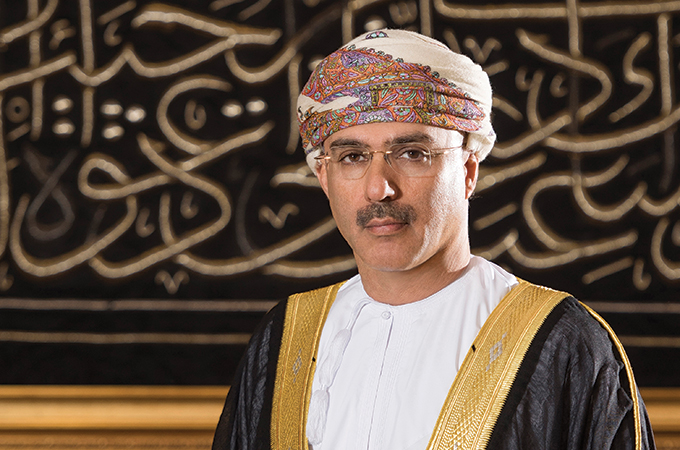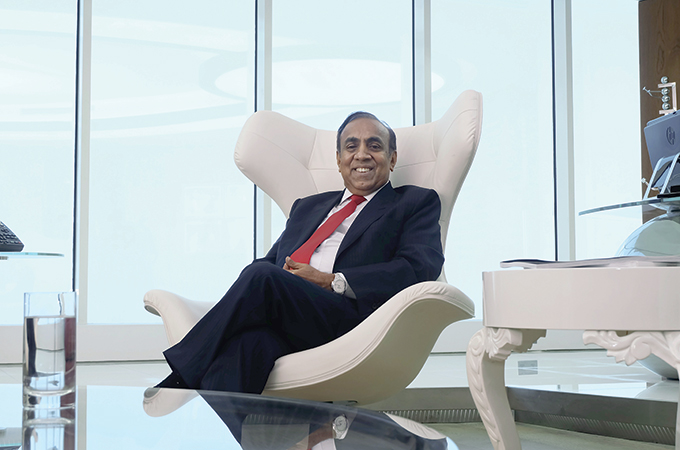Spring/Summer 2022
For Abbas Al Mosawi, the Bahraini master, boundaries melt in colours that speak the language of peace and harmony, heritage and history. Al Mosawi, who started his artistic journey even as Bahrain began its rise as an independent nation, is today a celebrated artist globally, though the heart of his art is deep inside Bahrain
‘I perhaps owe having become a painter to flowers’ – Claude Monet
Since Al Mosawi began to wield his brush half a century ago, neither the artist nor his tool has ever rested. There’s no art lover’s home in Bahrain that doesn’t hang or aspire to display an Al Mosawi.
For the Bahraini master, boundaries melt in colours that speak the language of peace and harmony, heritage and history.
Al Mosawi, who started his artistic journey even as Bahrain began its rise as an independent nation, is today a celebrated artist globally, though the heart of his art is deep inside Bahrain.
Though his repertoire is vast, a glimpse through the gamut of his creations is like a walk through the streets of Bahrain bygone. The places, characters and objects of yore fill the canvas, taking the viewer on a nostalgic trip.
Al Mosawi is a busy artist and his energy knows no bounds; he is always working on a commission or creating a new project. However, there is no lack of time or effort if he is asked to do something for the community or a cause. Affable and affordable, no wonder he is known as the ‘People’s Artist’.
Arabian Knight caught up with Al Mosawi at his studio in Bahrain.
The studio and his home are housed within a vast compound which also sports a nice garden. Step into the compound, a spring of colours welcomes you; every inch that’s not green has been embellished by Al Mosawi’s brush. He hasn’t left out his trademark hat even!
Inside the studio there is a galore of paintings – some old, some new, some work in progress; all sure to awaken the finer elements in you. You are reminded of Pablo Picasso’s quote: “Why do two colours, put one next to the other, sing? Can one really explain this? No.”
It’s a treat to listen to Al Mosawi; he is as much a story teller as is a painter. Time flies as he narrates his life’s safari, which is a celebration of moments of joy and there is no room for pathos.
He started his artistic expedition as a teenager, initially wandering with sketches, then for a period on the beaten track trying to copy masters and in no time, Al Mosawi carved his own path in the wide world of art.
Art was not something popular nor was it seen as a vocation for a youngster in Bahrain of the early 1970s when Abbas was taking his baby steps into the arena.
So, how did it all begin?
He took a deep breath and said: “It’s baba, my father was my inspiration. He was different from his peers and had diverse interests … he was an artist, poet, writer, photographer and a preacher.
“He was a religious scholar with an open mind and allowed his children to be free thinkers and do what they liked,” Al Mosawi recalls.
Abbas was born in 1952 and his home was very close to the sea. From childhood, the sea and boats enchanted him and he used to spend hours observing carpenters work on boats or watching the waves caress the shore.
“Our house was big and was like a museum. My father would bring paintings and artefacts that adorned the house and he would explain the importance of them to us. I am sure my artistic instinct arose from this.
“He was disciplined and was full of energy and used to do all mundane things by himself, apart from giving almost 11 lectures at mosques and majlis daily,” he says.
Abbas says his high level of energy and enthusiasm are gifts from his father.
As a child, Abbas was more at ease with the outside world than school or books. “I was not constrained by books and studies, I was always a dreamer,” he narrates.
In secondary school, he started realising he had good drawing skills as he worked on assignments in the class and helped his friends with theirs too. His teacher, the late Abbas Al-Mahrous, a well-known artist, encouraged him and he started copying the paintings brought home by his father.
Abbas was a ‘happy-go-lucky’ youngster, a friendly neighbourhood boy who lent his helping hand to everyone. For some time, he dabbled with poetry too.
After secondary school, he chose to study at the Teachers’ Training Institute. Though he had opted for Arabic as major, his interest lay in art. This was noticed by a teacher in the second year who advised him to move to the art discipline, which he was allowed to do after much persuasion.
In the last year of the course, he met Dr Ahmed Baqer, a well-known Bahrain artist, who saw in him great potential. The encouragement he received energised Abbas to paint relentlessly, sometimes well into the early morning hours. As practice made him understand art better, he began exploring different styles and themes.
Based on his work, Dr Baqer recommended a scholarship for him to study in Cairo. “I embraced the opportunity wholeheartedly. Actually, I am the first person to get a scholarship to study art from the Ministry of Education,” says Al Mosawi.
Though fine arts was his passion, he had to accept interior design course since scholarship was available only for that course. However, there were many elements of the art course including colour, materials, design, lighting and space that he utilised to grow his skills in art.
Cairo was then regarded as the centre of the Arab world ... a hub of knowledge, literature, art and culture. And what better place for a young, ambitious painter?
With his gift of the gab and a natural instinct to befriend people, he became a regular at the cultural scene in the university. He even won the Dana award for his ‘Henna Ceremony’ painting in 1979 (this was his first painting to appear in a book and it’s now treasured in Bahrain National Museum). He got himself involved in theatre, music and poetry as well.
“In one word, I was very active, doing many things at the same time,” he reminisces.
As he toured Cairo’s museums and art galleries, which had great collections from French masters and Egyptian pioneers, young Abbas was attracted to the impressionist style of painting and he started playing with light and colour. He was also attracted to the Sabry Ragheb style and produced several works in this style too.
His artistic ability, goals and horizon now widened and the hunger to do more increased. During the final year of the course, Abbas and friends Ali Kadhim and Abdul Ellah Al Moalim drove from Bahrain to Geneva via Turkey, then to Yugoslavia and Italy in search of new ideas and knowledge.
“We saw ourselves as cultural tourists. The purpose of our visits was to understand the different cultures and bring to life what we had learnt beyond the classrooms,” he remarks.
How can Cupid escape our savvy, sagacious young artist? During the last year of the degree, smitten by love, he would visit Alexandria every weekend to see Samira, also a Bahraini student.
“I proposed to Samira on the New Year’s eve at the stroke of the midnight hour by presenting her a painting of herself,” Al Mosawi says travelling back in time. The surprise, of course, won her heart and they are now happily married for the last 40 years and have three children (twin girls and a son). And as a side story, his friend, Ali Kadhim who often accompanied him to Alexandria (a journey of about 200 km) married Samira’s sister!
Back in Bahrain, he first taught interior design in a school in Jidhafs. The blank walls and compounds were an inspiration for him to do something. He taught the children to make simple designs on the walls to decorate them and within a few days the schools looked quite different. He taught in various schools for seven years, while continuing his artistic journey.
In the meantime, he, together with some leading artists of the time led by Shaikh Rashid Al Khalifa, set up the Bahrain Arts Society. Al Mosawi worked in various capacities in the society for more than 10 years, helping artists in many ways, including organising workshops, exhibitions, etc.
After seven years, in 1986, he felt it was time to go full steam with his life’s calling and he quit the job to become a full-time artist.
Was it a difficult decision to give up a steady job to pursue a career in the unknown? Al Mosawi says he was confident of success and wife Samira and Shaikh Rashid greatly supported him in this adventure.
Earlier, one of his paintings celebrating the bicentenary of the Al Khalifa rule in Bahrain was printed in a commemorative book that was distributed to every household in Bahrain. This made him a household name and brought him work from government, royal family and others. Some of his paintings also featured in postal stamps.
The big break came in 1990. “I met a person who believed in my art and he started to buy regularly and supported my work. He took my paintings to Saudi Arabia and sold/gifted them. Later I was told they were going to palaces and business associates of the buyer. He was happy and I was happy; it was an association beneficial to both.”
Initially, his paintings covered four subjects: Historical and portraits; animals and birds; traditional Bahrain; and the country life and village and streets of Manama.
“I am mostly an impressionist. (Claude) Monet is my favourite and I have been influenced by him,” he continues. “I visited Monet Gardens (in Giverny, France) three times and have visited many exhibitions of his works in Europe. He is, in a way, my teacher. Some people call me ‘Monet of the Gulf’,” he chuckles.
While being influenced by what he saw in Cairo and the Western world, his artistic mind meandered through Bahrain’s streets and alleys for themes. While he was giving an expression to his inner self through the medium of art, he was also voicing the nation’s urge to be on the cultural map of the world. Here was a young painter who saw Bahrain through myriad colours and was determined to bring it to life on the canvas.
Al Mosawi regularly draws from the memories of the past for his paintings – the streets he roamed, the sea he found solace at, the boats that enchanted him and the woods that gave shade.
However, how he dealt with the subject changed with time. Two of the major themes of his paintings are the souk and the labyrinth of narrow lanes of Manama. The details of the scene that are etched in the painter’s mind are translated on to the canvas in colours. The shops, men and women taking a stroll, light passing through the tarpaulin cover over the streets, the wooden balconies ... they are all there.
The desert too is a major theme in his works. However, for Al Mosawi, the desert is not lifeless miles of sand; it’s a symbol of unrestricted openness, a place without barriers.
Women also form a major subject, but in his own way he transcends the urge to paint the body to one of focus on character and strength.
Also finding their place in his paintings are village men and women, water ponds, women bathing and washing clothes.
One thing was clear to him from the beginning – that his art must communicate with common people, in a language the ordinary people understood.
He admits almost every 10 years there has been a change in the style of his paintings – he had moved from portraits, realism, impressionist to abstract and symbolism. Colours were restrained in the first few years. However, in later paintings, one could see him employ greater freedom in using colours, with blue being a predominant hue.
A mature artist many a time responds to the events of his time. Al Mosawi is no exception.
Having seen the after-effects of the long conflict between Iran and Iraq, one issue that haunted him was war. Peace became a subject dear to him and when the war clouds gathered again in the Gulf in 1990, he wanted to do something. So was born his Peace project.
“My message was about our land, our children and the destruction war would cause. The Iran-Iraq war which continued for eight years destroyed everything, our beaches were covered with crude, the sky was filled with smog; and nobody got anything after years of fighting.
“When the first Gulf War came, as an artist I felt I should do my bit to send a strong message against war. Finally, when they gave a deadline to Saddam Hussein to leave Kuwait, I decided to give myself 24 hours to paint a message of peace,” Al Mosawi says.
He started the 24-hour project at 8 in the morning and finished at 8 am the next day. The painting was a call to Saddam to leave Kuwait and spare Iraq from the devastation that could happen. Saddam heeded neither the warning nor the appeal and the region had to bear the brunt of another war. However, the painting gave Al Mosawi the satisfaction that he had done something for peace, the only way he could.
In 1998, he created the Century Dream, which Al Mosawi says is his masterpiece. It is an abstract painting based on a dream within a dream of a journey beyond the universe. The work is a call for a vision of hope for the 21st Century with peace and sustainability as the main themes.
Though he deliberately keeps himself away from politics and political themes, the push for peace overrides these boundaries he has set for himself.
As the new Millennium approached, Al Mosawi planned to welcome the Year 2000 in an artistic way, portraying the aspirations for people for the new century.
The Year 2000 project began 2,000 days prior to the start of the new millennium and covered many countries, exhibitions, workshops and artists and children of the world.
“As a climax to the programme, on January 1, 2000, I invited 2,000 children to the Tree of Life in Bahrain and asked them to paint their vision for the future. The result was extraordinary and greatly satisfying,” Al Mosawi recalls.
The 9/11 attacks on the US is a watershed in history and the events shocked Al Mosawi so much that he immediately got into action.
“I was so moved and shocked that I immediately thought of making this painting about peace,” he says, showing a photo of the creation. “The painting portrayed the horror and sufferings of people and at the same time was a cry for peace. It was presented to the people of America through Johnny Young, the then Ambassador.”
“This painting demonstrates our concern and serves to show that wars, the meting out of death and revenge are not the right instruments to affirm our humanity. This painting is a prayer of peace and hope from the shores of one of the islands of love,” he wrote in a message to the American people.
One of his recent works that was much-acclaimed is the illustrative paintings he did for a collection of poems dedicated to His Majesty King Hamad by Hadi Al Halwachi. “This was a very challenging work and the result was amazing and His Majesty was very pleased with the outcome.”
While we probe the past, Al Mosawi is eager to speak about the future. And there are many projects working in his mind. He has already lined up huge boards for his next project.
“Each season, I work with a new theme; the next one is called ‘Hand to Hand’. The project, a commemorative work for the 50th anniversary of Bahrain’s independence, will involve about 100 artists and amateurs from different nationalities. We will go to the Karzakan forest and in the natural atmosphere, using random colours, the new work will be created in 50 hours,” he reveals.
One of his grand plans is to create an island of peace … a virgin island where you can breathe clean air, drink clean water, wander in the woods and set free your creative spirit. It would be like a natural museum, without walls, Al Mosawi says.
Once a teacher always a teacher. Al Mosawi, an inspirational personality, loves to give tips to budding artists and involve them in his projects. He also imparts his knowledge to university students through various programmes.
It’s already past lunch time. However, we can’t let him go without picking his thoughts on two topics of interest – the high value of art at auctions and the difficult-to-understand abstract art.
“Art has become an investment and an instrument of advertising and prestige. Companies want to show their taste for refined culture and how rich they are by investing huge sums in paintings. These valuations are not real and it doesn’t happen all the time.
“If you are looking for a reasonable price for your painting, you will be able to sell to people who truly enjoy the art and are proud of their buy. And, one need not keep them in bank lockers or have an army to guard them,” he says succinctly.
On the other question, he opines: “We should leave it to the artist. Each person studies something and tries different ways to express himself/herself. Some art needs philosophy to read; some others want to grab attention. Some just tease you. We can’t say they are wrong... Art is changing too. Before it was a piece on the wall, now it’s multimedia too. They have lighting, music, etc. We can’t say this is right or that is wrong; art is art.”
As art changes and digital becomes mainstream, Al Mosawi too has an open mind on new things. But the visits to the seashore and the souk continue; and the wonderful painting of the evening sea on the studio wall is already booked.
Photos by: Ammar Hammad. Instagram: @ammar360



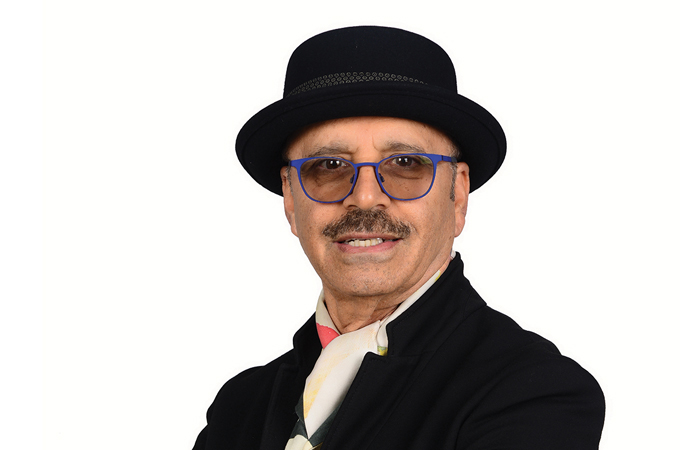
.jpg)
.jpg)
--100.jpg)

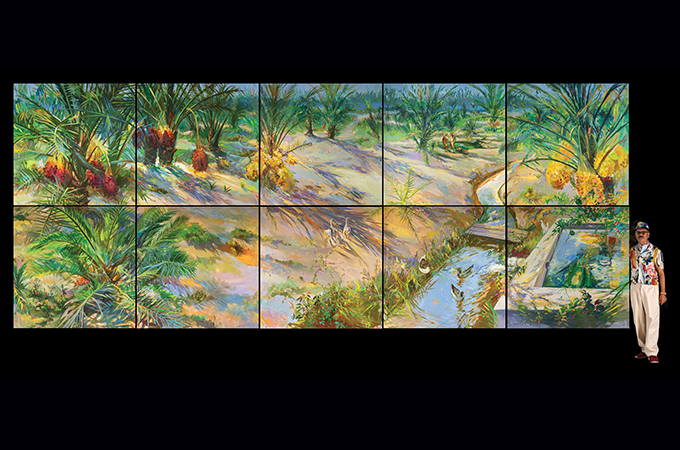
.jpg)
--100.jpg)
.jpg)
--100.jpg)

.jpg)
--100.jpg)
.jpg)
.jpg)
.jpg)
